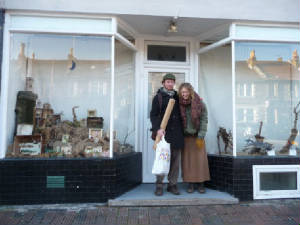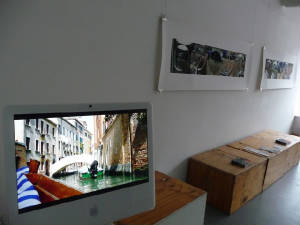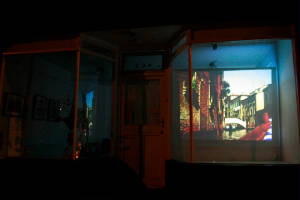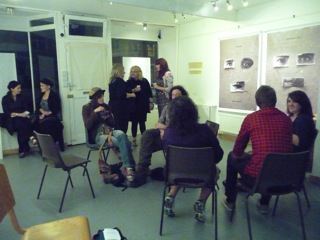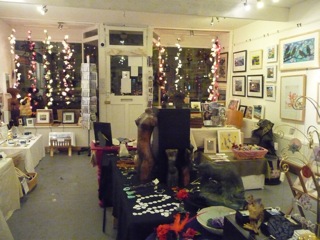The installation, You Count, went into
the windows at 204 Gloucester Road, Bristol as part of the 204/2010 artist curation season, the Small Science section curated by Carol Laidler . The piece was
made as a result of a very exciting workshop about microcontrollers and robotics. Seemed that the best way to find out about
this stuff was to have a go.
An interactive counting machine seemed
like something simple to start with. Interrupting the infra red beam on the input would cause the lights to flash. An Arduino
was programmed to count up to nine on the first light, then to the second for ten, eleven is one count on the first and one
on the second and so on. The sensor was placed in the window with the tellies, a sort of bait, then people who looked
into the window would be counted and the lights in the other window would flash.
Clearly the basis for this installation is surveillance and the benignity or otherwise of the watcher.
A populace watched covertly is thus open to covert control, has surrendered power and the safety of anonymity by default..
Science brings knowledge; technology brings ways of using that knowledge. Once techniques exist they are used.
Suddenly roads are awash with speed cameras, but are they in the most dangerous places or the ones where speeding occurs most
often? Do security cameras bring security or merely cause nefarious ongoings to move somewhere else? The happy neologism Mission
Creep springs to mind; be careful what you wish for.
My favourite quote is from the LAPD outline profile for a terror suspect:
regard as suspicious anyone who, among other things, “uses binoculars, counts footsteps, takes notes, draws
diagrams, speaks with security staff, and photographs objects “with no apparent aesthetic value”. This
seems to precisely fit me, snooping around empty buildings, photographing electricity substations, chatting to security people.
The artist as terror suspect…

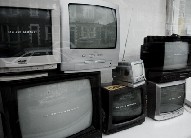
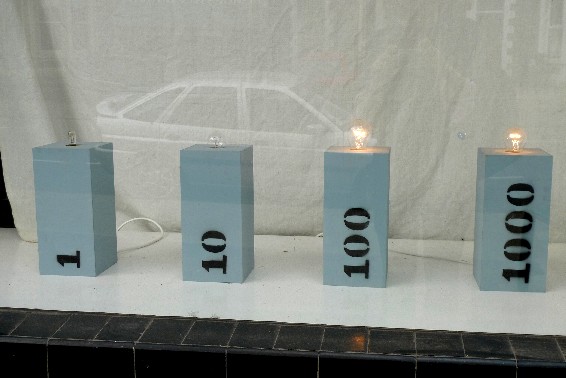
White lettering on the telly screens said: You are observed,
Your idiosyncracies are recorded, You are not a number, You are not anonymous, You can be recognised.
In a city of strangers the next passer by may be an assassin or a terrorist. A gruesome fate waits
around the corner. Trust no one. Go out only when absolutely necessary. Take every precaution; technology can only ameliorate.
Fear stalks the streets. Willingly freedoms are traded for protection. Protection from risk assessed through a lens of fear
stoked by constant news of tragedy and mayhem. Bad news sells; joy doesn’t.
We live in the most watched society on earth, but not the most dangerous; ergo it works, like throwing
buns out of the train to keep elephants at bay (well do you see any elephants?).
As technologies are refined in use, further possibilities open up. Efficient surveillance holds
out the initial hope of reduced risk, surrendering unknown, unappreciated liberties seems a good bargain.
If you have nothing to hide you have nothing to fear.
At what point do a government’s and a citizen’s interests cease to align?
Do you know when and where you are being observed?
Do you know what constitutes suspicious behaviour?

